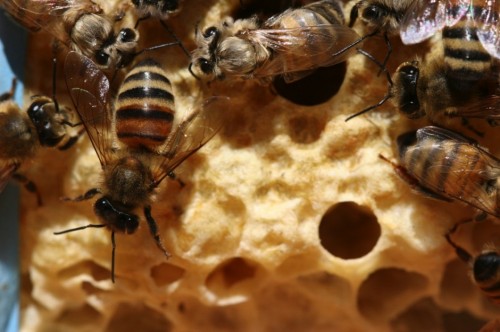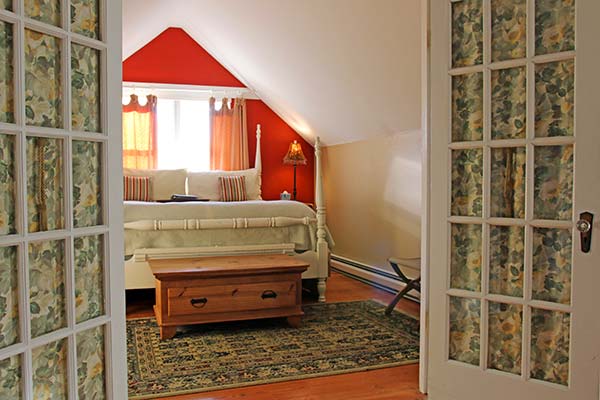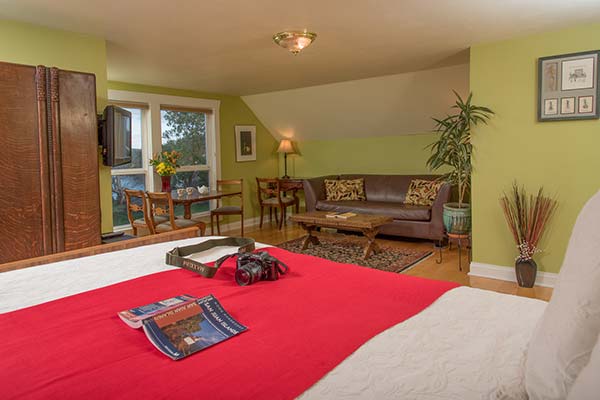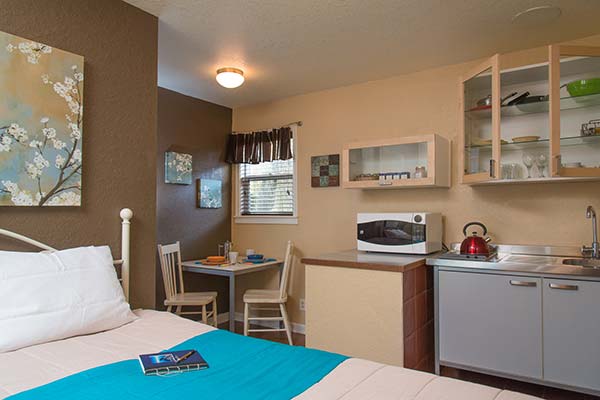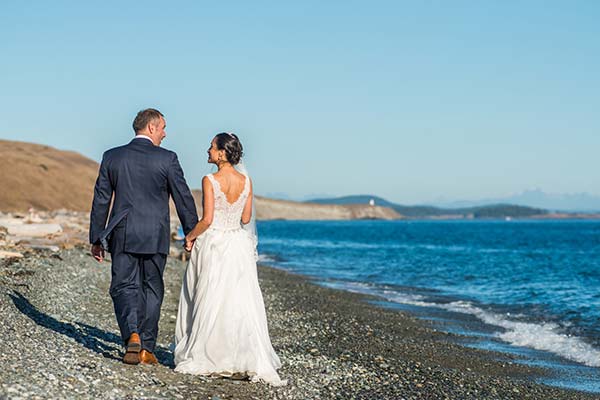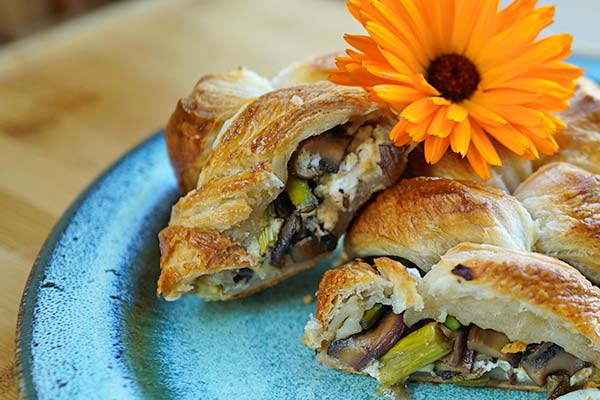No doubt you’ve heard that saying, “Make hay while the sun shines.” Here on San Juan Isl
and we can add “Make HONEY while the sun shines.” The marine climate here is just cool enough to keep the flower nectar from flowing easily, so poor little honey bees have a very short window in which to gather their nourishment. Particularly with a summer like we’ve had this season – sun one day, rain the next – it’s especially important for bee keepers to monitor their stash.
Yesterday I had the rare opportunity to spend an afternoon with local bee keeper Brian Enders. Brian’s been working with the little critters for about four years now, having been talked into the hobby by his bee-keeping brothers and father – a family tradition you might say. He started with three hives, then added a fourth, but the hive died just a couple months ago; the worker bees rejected the queen (“off with her he
ad!!!”) and flew away. There went THAT investment!! Thirty-five thousand bees, gone with the wind!
Females Versus Males
But he’s still at it, or rather, the rest of his bees are. It takes just three weeks from the time the egg is laid to the time it’s hatched, and after that, there’s no rest for the wicked – or the workers. They’re all female of course, and like most women they’re busy all the time (is that sexist or WHAT?!). For the first three weeks of their life, they stay in the lower “brood” levels of the hive, tending to the newly laid eggs, making sure the embryos are getting protein; waiting on Miss Queen Bee; cleaning house; m
aking wax; a woman’s work is nev
er done. Then the last three weeks of their life are spent roaming around the neighborhood in search of nectar to bring back to the hive.
And “what of the males?” you ask. Well here’s an interesting tidbit: the queen can select whether each egg is fertilized or not. The fertilized eggs become females, and the unfertilized eggs turn into males. But get this: it’s the hive members who tell the queen whether to fertilize the eggs or not! “No, we only need a few males to get the job done.” And their job? Their job – their ONE and ONLY job – is to mate with the queen,
because the more times the queen mates, the more she’s accepted into the hive. Then they die! They’re literally kicked out of the hive in the Fall. Umph, umph, umph – now that’s some kinda tough life!
Here’s another interesting tidbit: when a female bee stings someone or something,
she dies, but she also releases a pheromone that attracts other bees to come help her. Meaning, if you get stung, look out brudda, cause doz girls gonna stick togetha and whomp you!!
Experience Beyond the Science
But enough of all this science stuff. The real reason for this post is to tell you what it was like. First off, let me say, I’m allergic to insect bites and stings, so signing up for honey extraction duty was a tad un-nerving. Fortunately, Brian’s wife Joanne is a nurse, and stood by to assist, assuring me an Epi Pen was handy if needed. She suited me up in her white bee-keepers uniform, making sure not the tiniest bit of flesh was exposed. With the clumsy garb, I wondered if this was a bit like astronauts feel, but realized they’re probably not sweating profusely like Brian and I were in the warm San Juan sun. Heart pounding, stomach in a k
not, we calumped over to the hives with the smoker, a small tin can contraption that looks similar to a lantern but with charcoal burning in the bottom and a bellows on the side. Brian showed me how to squeeze the bellows, aiming the spout into holes in the hive. He explained that the smoke is like anesthesia to the bees,
subduing them, but not harming them. We waited a moment for the smoke to take effect, then Brian lifted the lid off the top level of the first hive. SUBDUE MY YOU KNOW WHAT!!!
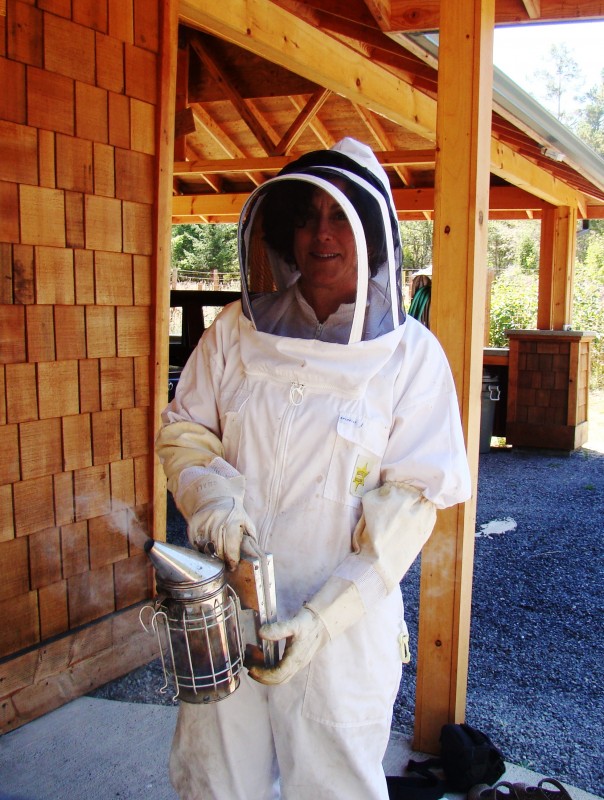
Those bees were swarming all OVER us! The air was thick with them! And the SOUND – that angry buzzing sound so close! Lordy, lordy, the hair on my arms and head and neck stood up straight! Shivers went down my spine. I was creeped out BIG TIME! But the amazing thing was the scent. I could catch whiffs of the honey, just by standing next to the open hive. Brian suggested I put my face right down over the racks and take a deep whiff. I thought he was joking! “Go ahead, put your face right down on it.” My mind was screaming “Are you nuts?!?!” No doubt he could sense my reluctance, and graciously demonstrated how to do it. Finally I drew up my courage and stuck my be-netted face right over the top of the hive – briefly. Enough to pick up a warm, yeasty, sweet smell, like nothing I’ve gleaned before.
Inside the Hive
Scent lesson over, we proceeded to unload trays from the hive. Each hive has a series of wooden trays, approximately 8-inches high and 24-inches long, which hang from the sides of the box. The trays Brian uses have a plastic comb-looking sheet in the center, to which the bees add wax, building the
comb up all the way to the edges of the frame. As they deposit the honey into the comb and fill the cells, they cap off the individual cells with non-breathable wax (breathable wax is used to cap off the cells with the embryos) to protect the moisture content and preserve the honey. When the tray is full, it’s time to extract the honey. On San Juan Island, this only happens two or three times a summer; for the cooler months, the bees need the honey to live on.
Here’s another creepy part: when Brian would lift a tray out, the stubborn little bees would cling to it; the trays were almost solid bees, bustling and quivering in a frenzy. He had to shake them off, and you could hear their little bodies hitting the trays below – OOOH, it gave me the heebies AND the jeebies!!! T
hen he had to brush off any remaining bees, and I carried the tray to a crate far enough away from the hives so the bees would be too busy to follow. We followed this same process for all three hives, filling four large storage crates, then were ready to extract.
Extrating the Honey

The process of removing the honey from the combs was simple: lightly scrape the caps off the combs (the glistening honey oozing out of the cells was simply beautiful), place the trays in the centrifuge (three at a time) and turn the handle on top of the centrifuge to get the trays spinning. It was like spinning sugar for cotton candy, with honey whipping to the sides of the great steel drum; it was a great workout for the biceps too. It was interesting to see the variation of color in the combs, and amazing to feel the difference in the weight of the trays from before and after spinning. From the moment of the first twirl, the heavenly aroma of honey permeated the room. At the bottom of the centrifuge, beautiful, golden slush dripped slowly into a bucket fitted with netting inside, which acted as a filter. Once the bucket was full, it was simply a matter of pouring the honey into bottles or jars. It was a clear, sunny yellow color, distinctive in flavor as it was quite different from the darker, more intense flavored he’d brought in earlier. It was positively addicting! In fact, Brian’s July harvest won Best of Class at the San Juan County Fair!
Brian’s honey is one of the reasons our house-made granola tastes so luscious – his little ladies just do a damn fine job! It’s too bad he only has enough to supply Harrison House Suites, Tucker House, Coho Restaurant, and a few more lucky buyers. But you can enjoy it in our granola; simply click here for ordering info.
To read news on our restaurant, sister inn and around the island, check out cohorestaurant.com,
www.tuckerhouse.com, and www.experiencesanjuanisland.com. Or follow us on the Tucker House Facebook page, the Harrison House Suites Facebook page, and the CohoRestaurant Facebook page. You can also see more photos on Stephanie’s Facebook page.


